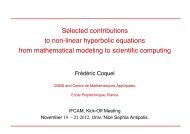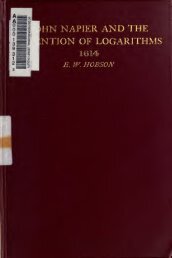The construction of the wonderful canon of logarithms
The construction of the wonderful canon of logarithms
The construction of the wonderful canon of logarithms
You also want an ePaper? Increase the reach of your titles
YUMPU automatically turns print PDFs into web optimized ePapers that Google loves.
Construction <strong>of</strong> <strong>the</strong> Canon. 9<br />
000502 1 is <strong>the</strong> same as 9999998xxr<br />
<strong>of</strong> o<strong>the</strong>rs.<br />
^^'^ so<br />
6. When <strong>the</strong> tables are computed, <strong>the</strong> fractions follotvmg<br />
<strong>the</strong> period may <strong>the</strong>n be rejected without any sensible error.<br />
For in our large numbers, an error which does not exceed<br />
unity is insensible and as if it were none.<br />
Thus in <strong>the</strong> completed table, instead <strong>of</strong><br />
9987643-8213051, which is 9987643 18000000 . we<br />
may put 9987643 without sensible error.<br />
7. Besides this, <strong>the</strong>re is ano<strong>the</strong>r rule for accuracy ; that is<br />
to say, when an unknown or incommensurable quantity is<br />
included between numerical limits not differing by many<br />
units.<br />
Thus if <strong>the</strong> diameter <strong>of</strong> a circle contain 497<br />
parts, since it is not possible to ascertain precisely<br />
<strong>of</strong> how many parts <strong>the</strong> circumference consists, <strong>the</strong><br />
more experienced, in accordance with <strong>the</strong> views <strong>of</strong><br />
Archimedes, have enclosed it within limits, namely<br />
1562 and 1561. Again, if <strong>the</strong> side <strong>of</strong> a square<br />
contain 1000 parts, <strong>the</strong> diagonal will be <strong>the</strong> square<br />
root <strong>of</strong> <strong>the</strong> number 2000000. Since this is an incommensurable<br />
number, we seek for its limits by<br />
extraction <strong>of</strong> <strong>the</strong> square root, namely 141 5 <strong>the</strong><br />
greater limit and 1414 <strong>the</strong> less limit, or more<br />
accurately I4i4^|ff <strong>the</strong> greater, and 1414^!^<br />
<strong>the</strong> less; for as we reduce <strong>the</strong> difference <strong>of</strong> <strong>the</strong><br />
limits we increase <strong>the</strong> accuracy.<br />
In place <strong>of</strong> <strong>the</strong> unknown quantities <strong>the</strong>mselves, <strong>the</strong>ir<br />
limits are to be added, subtracted, multiplied, or divided,<br />
according as <strong>the</strong>re may be need.<br />
8. <strong>The</strong> two limits <strong>of</strong> one quantity are added to <strong>the</strong> two<br />
limits <strong>of</strong> ano<strong>the</strong>r, when <strong>the</strong> less <strong>of</strong> <strong>the</strong> one is added to <strong>the</strong><br />
B<br />
less



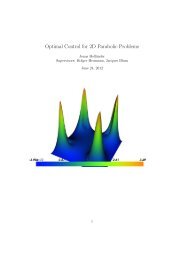
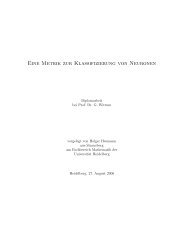
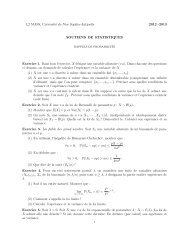
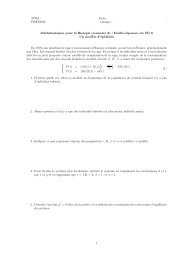


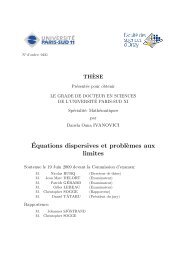
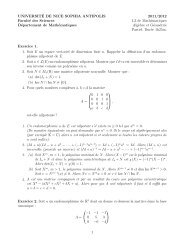
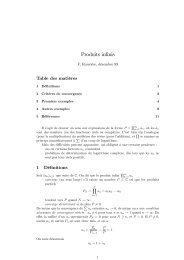
!['eries enti\`eres (+ [D78 Th d'Abel angulaire])](https://img.yumpu.com/14067031/1/184x260/eries-entieres-d78-th-dabel-angulaire.jpg?quality=85)
